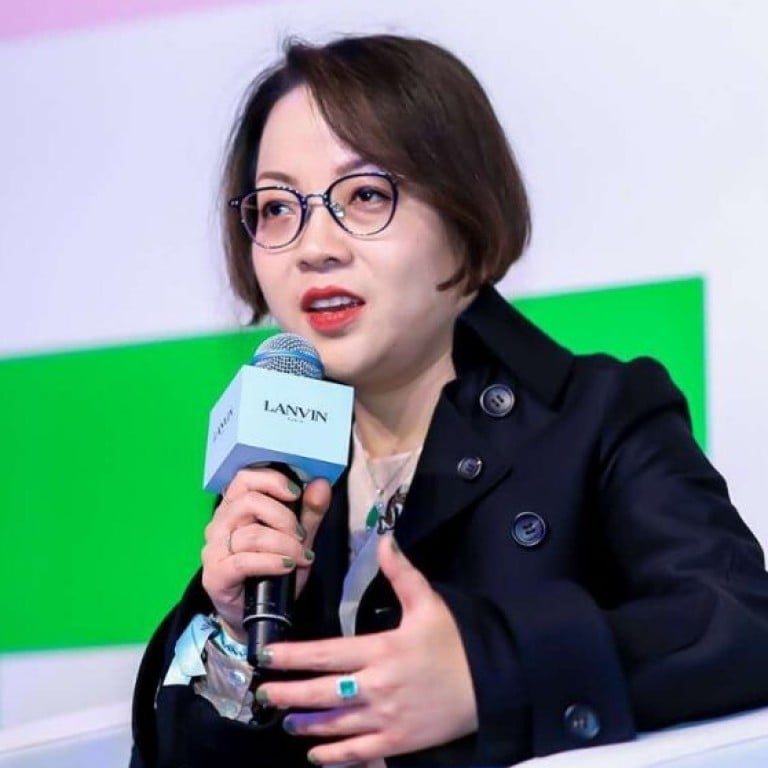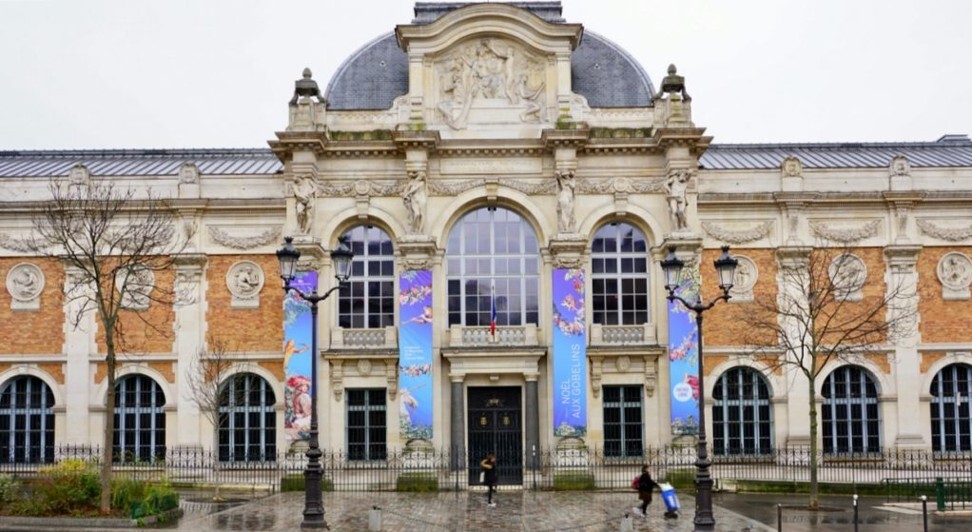Meet Joann Cheng, Lanvin’s interim CEO, who is steering the French luxury fashion brand into a post-coronavirus future

Joann Cheng was on the seventh day of a 14-day quarantine when she spoke to Jing Daily on a recent phone call. The chairwoman of the Shanghai-based Fosun Fashion Group, which owns legacy luxury brand Lanvin, flew back from Paris in late March and was told to stay at home because of the city’s stringent quarantine measures for inbound air travellers.
It’s not the best time for Cheng to be locked indoors, considering her new responsibilities within the company. After Lanvin’s former CEO Jean-Philippe Hecquet stepped down on March 17, Cheng immediately assumed his role as interim CEO, where she will oversee operations and strategy for the 131-year-old French fashion house.
She will attempt to split her time 50/50 between her role as chairwoman and her new interim CEO position. As one might expect, her quarantine schedule is filled with calls from around the world that stretch from eight in the morning until sometimes midnight.
“Working at home is even busier than being at an office,” she laughed.
Fosun Fashion Group is representative of its parent company, the tech-driven consumer group Fosun International, and its global ambitions, as 55 per cent of the group’s 142.98 billion yuan (around US$20.17 billion) revenue during 2019 coming from mainland China, while 45 per cent came from overseas.
How will luxury brands like Chanel survive post-coronavirus?
Unlike other investment groups that divide their portfolios by industry, the family-oriented Fosun International categorises their subsidiaries under three “ecosystems” – Health, Happiness and Wealth – which represent the three qualities families need to thrive.
The fashion arm, which fits into the Happiness ecosystem, also sets itself apart from other fashion investors by being hands-on with its portfolio, which includes Lanvin, Wolford, St John Knits, Caruso and Tom Tailor. Fosun Fashion is still “a baby”, said Cheng, since it was founded late in 2017 when Fosun International’s leadership decided to shift its strategy from a holdings company to a parent company with an interest in managing daily operations.
Formerly a KPMG consultant and the CFO of Chinese drone-maker DJI, Cheng said that all successful companies have a similar trait: their products.
“The reason why DJI is so successful is because of its drones,” she said. “If we can strengthen the products of our fashion brands, the success of our companies – such as Lanvin – will follow.”
Below, Cheng chats about her new role, how Lanvin pulled off a live-streamed virtual reality show at a historic museum during Paris Fashion Week, and the rising opportunities in global luxury despite the effects of the Covid-19 pandemic.
I understand after recently returning from Paris, you are still under a mandatory quarantine. What do you do on a typical day?
My days revolve around conference calls. I spend about 50 per cent of my time on our five portfolio companies, going over how Covid-19 affects them with the management teams. In this difficult time, the foremost thing is to ensure the safety of our global employees.
Since I took over the role of CEO at Lanvin in March, I have spent 50 to 60 per cent of my time [working] on the company. We have David Chan, Fosun Fashion’s vice-president, based in New York, and we both communicate with the management in Paris very closely. We do conference calls every day about Lanvin’s operations, such as departments like inventory, e-commerce, marketing, finance and accounting, and legal.
How can you balance a healing Greater China with a worsening rest of the world, and are there any experiences you could share with CEOs in other countries?
We could share our experiences of the pandemic in China, but each country is different. Take e-commerce as an example. In the US, there is no WeChat nor Mini Programs, so we came up with some customer relations management (CRM) tools that fit local customers’ [e-commerce] habits. To reach our VIP clients, we text or email them to let them know that although our stores are closed, we can still ship orders. We also send them new looks via these tools.
When we talk to Lanvin’s management, we share these experiences from other brands, and we also make decisions concerning Lanvin’s local circumstances. Currently, Lanvin’s central warehouse [in Europe] is still in operation, but we are trying to shift shipping capabilities to Asia because it’s recovering fast, and has many e-commerce platforms such as Little Red Book and Secco to work with. So, with order allocation, we are leaning toward the Greater China and Asia market.
How luxury brands are adapting to post-coronavirus China
The one common theme across different brands’ marketing approaches is social content. When you look at Lanvin’s Instagram, you can see some recent posts of the traditional French cartoon character Babar the Elephant. Our social media pushes out posts about how everyone should try to stay at home as much as possible and do exercises like yoga. We want people to feel warmth and care from our brand during this difficult time because we aim to have more than transactional relationships.
As a newly-minted CEO, what kind of decisions have you made for Lanvin over the last two weeks?
As the CEO, there are daily decisions I need to make on operational levels. There haven’t been any big changes strategy-wise. In the past week, we’ve spent a lot of time on our employees. Paris, where Lanvin has its headquarters, was recently locked down. We want to make sure our employees have the resources to work from home, including laptops and access to conference calls. While some employees from our retail stores or certain departments cannot work, we want to make sure they are safe at home. The team of designers is also working at home to prepare for the next season.

During Paris Fashion Week, Lanvin partnered with iQiyi for a virtual reality cloud show and worked with luxury e-commerce platform Secco on live-streaming. Can you give us some details about how these collaborations came about and what the process was like?
Back at the end of January, when the Covid-19 outbreak first happened in China, we could already see it having a prolonged effect. We felt some impact ahead of Lanvin’s menswear fashion show because China’s KOLs and celebrities couldn’t go to Paris [due to travel restrictions], making it more important to bring our runway shows to the Chinese audience.
How China’s luxury sector is engaging with customers from a social distance
The broadcasting initiative with iQiyi and Secco was led by Fosun Fashion because we are geographically closer to our partners. Under a strained timeline, we decided to broadcast the womenswear runway show in the forms of both virtual reality and live-streaming. Our team worked day and night during that one-and-a-half to two weeks. But looking back, it was well worth it. While the target audience of a traditional show would be media and celebrities, the cloud show has had much more exposure among consumers.
As we worked to bring the show to digital, we conquered a lot of challenges, including technical difficulties. Virtual reality places a high demand on network bandwidth, and the runway was taking place in a historic museum – a venue [that] isn’t technically advanced at all – so we had to pull some cables from outside. We rushed to find a local French supplier to build the infrastructure for us, but we couldn’t change any of the museum’s physical features because it is a protected cultural heritage site. But, together with Lanvin’s French team, we came up with a solution because we couldn’t give up.

How has Lanvin changed since you acquired it in 2018? What are Fosun’s expectations for Lanvin now?
Lanvin is the jewel in our crown – it will always maintain its flagship status within the group. We have largely improved Lanvin’s products over the last two years, and Lanvin designer Bruno Sialelli’s style has evolved with the collections and has been highly regarded by both the industry and our clients. We have always put the products before everything else. In terms of building recognition, last year we opened new stores in New York’s Soho, Hong Kong and Shanghai, and we’ve also made a lot of moves on our digital channels. There’s increased engagement on our social media with more conversations and followers. Celebrity endorsements have driven sales for the brand, too. I think Lanvin is on the right path, but we can’t rush when we want to build an enterprise and a brand. We need to be patient so that the products will be better and better.

What are some of the biggest opportunities for luxury brands in China now?
I think that while customers are still cautious about physical shopping under the effects of the pandemic, digital has remained a strong and direct channel for reaching them. In the long term, going digital is unavoidable. Before the pandemic, consumers were wary about purchasing luxury goods online. But now, brands are using their own methods to eliminate worries. For example, we could place the most timely and comprehensive products across e-commerce platforms and use videos and live-streaming to show details of our products. We could also use 3D technology to allow customers to tour our digital shops.
Another need from the customers is that they want to know how they would look wearing the pieces, many technical measures can resolve this need. Live-streaming is one, in which the hosts will tell you about products, and which body types suit them better. When there’s such a detailed explanation, customers are likely to worry less. So I think this is an obvious trend.
What’s your career advice for fashion hopefuls who have finance and business backgrounds like yourself?
I think the world belongs to youngsters. In most scenarios, I think the most important thing is to have a cross-industry mindset. You need to love what you do and constantly enrich the depth and width of your skills. When those skills are strong enough, it doesn’t matter which industry you are in. That’s my takeaway from working at consultancies and fund management firms before Fosun.
When I was at KPMG, I audited many companies and went on frequent business trips. During the 10 years I was there, I probably spent nine months each of about six or seven years on consulting trips, so I got used to high-intensity work and travelling. I also learned about many companies and investing. When you’ve seen a lot of portfolios, you start thinking about various strengths and weaknesses. That’s how you build your skills. The world is full of opportunities for young people, but to be able to grasp the opportunities you want, you need to be able to adapt quickly and have a solid skill set.
Want more stories like this? Sign up here. Follow STYLE on Facebook, Instagram, YouTube and Twitter .
This article originally appeared on Jing Daily.

- Talking while in quarantine in Shanghai, the Fosun Fashion Group chairwoman lays out the future of fashion